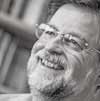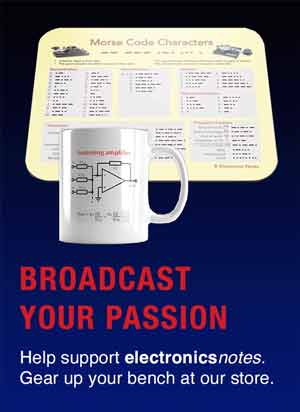Home » Component data » RF mixers (Frequency mixers) » this page
Mini-Circuits ADE-30+ +13dBm 200MHz to 3000MHz Passive RF Mixer
Data for the Mini-Circuits ADE-30+ +13dBm 200MHz to 3000MHz passive double balanced RF mixer (or frequency mixer) including electrical parameters, pinout, package type and many other key datasheet details.
The Mini-Circuits ADE-30+ is a level 7, i.e. 7dBm local oscillator input level passive mixer covering 200MHz to 3000MHz. It has a low conversion loss of 5.4dB.
This frequency mixer is aimed at applications including digital cellular, digital cordless phones and PCN, although it could obviously be used elsewhere.
Key details and performance parameters for the ADE-30+ passive double balanced RF mixer.
| ADE-30+ RF mixer datasheet parameters & data |
|
|---|---|
| Parameters | Details |
| RF mixer type | Passive double balanced mixer |
| Package type | CD542 |
| Active / passive | Passive |
| Supply voltage | N/A |
| RF input frequency range | 200MHz to 3000MHz |
| LO input frequency range | 200MHz to 3000MHz |
| IF Frequency range | DC - 1000MHz |
| Conversion gain / loss | -4.5dB typical |
| LO to RF isolation | 35dB typical |
| LO to IF isolation | 20dB typical |
| Third order intercept, IP3 | 14dBm typical |
| RF input power | 50mW max |
| LO input power | +7dBm optimum input level |
| Maximum LO input VSWR | 8.8:1 at 200MHz, 2.28:1 at 1650MHz |
| Maximum RF input VSWR | 3.68:1 max |
| Primary manufacturer | Mini Circuits |
Outline & Pinout:
Explanation of RF mixer parameters
| Parameter | Explanation |
|---|---|
| Input Frequency range | Most RF mixer have a frequency range over which they can operate. As a result of the components used, this might include both upper and lower limits. |
| IF Frequency range | This is a specification used on some RF mixers and it defines the frequency range for the IF output. |
| Conversion gain / loss | Active miers often offer a level of gain between the RF input and the IF output. Passive mixers will introduce a loss. The conversion gain, measured in dB is a measure of this. |
| Noise figure | This is an important factor for low noise systems and it is a measure of te noise introduced. It is expressed in terms of dB. |
| LO to RF isolation | It is important that the normally high level local oscillator signal is isolated from the RF input, otherwise spurious signals might be generated.. This parameter gives a measure of the isolation or reduction in the LO signal from the LO input to the RF input and it is expressed in dB. |
| LO to IF isolation | This is the isolation, i.e. reduction in the level of the LO signal between the local oscillator input to the IF output expressed in dB. |
| RF to IF isolation |
| Parameter | Explanation |
|---|---|
| Output third order intercept, OIP3 | The Third Order Intercept Point (IP3) for an RF mixer is a theoretical power level at the input (IIP3) or output (OIP3) where the power of the desired signal and the third-order intermodulation distortion (IMD3) products become equal. |
| Output 1dB compression point | The 1dB compression point of an RF mixer is the input power level at which the desired output signal power drops by 1 dB below the level expected from the ideal linear conversion gain. |
| RF input power | The maximum power level that can be applied to the RF input for the mixer to perform within its specifcation. |
| LO input power | The recommended power level for the local oscillator signal at the LO input. |
| IF output power | |
| Maximum LO input VSWR | In order to achieve its required performance the local oscillator source impedance must match the required impedance. This specification gives the maximum VSWR for it to reach its specified performance. |
| Max output spurious emissions | The maximum level is unwanted spurious signals relative to the wanted one expressed in dB. |
These are the main RF mixer parameters that have been included in our list. There are others, but the ones included are the main ones encountered.
Please note, that the data given is the best estimate we can give within a tabulated summary of this nature. Parameters also vary between manufacturers. Electronics Notes cannot accept any responsibility for errors, inaccuracies, etc, although we do endeavour to ensure the data is as accurate as possible.
Notes and supplementary information
• Availability & sources
The ADE-30+ is available from a number of stockists and electronic component distributors many of which are given in the table below.
ADE-30+ Component Distributor, Stock and Pricing
• Further details
The ADE-30+ is a high level (Level 7 or +7dBm LO) passive mixer which provides coverage for frequencies over a wide bandwidth for a mixer of this type and it covers frequencies between 200MHz to 3000MHz, with an IF range of between DC and 1000MHz.
The device includes RF transformers to ensure the correct phasing, transformation etc. It is the use of transformers that contribute to much of the bandwidth limitations, although other aspects of the performance can be exceptional.

The RF mixer / frequency mixer is manufactured to precise standards to ensure the required performance is achieved.
The ADE-30+ is a high performance double balanced mixer which can be used in a variety of RF systems including cellular telecommunications, PCN, instrumentation and ISM. Being a wide band width high performance mixer it is applicable to many areas though.
 Written by Ian Poole .
Written by Ian Poole .
Experienced electronics engineer and author.
Return to Component Data menu . . .




